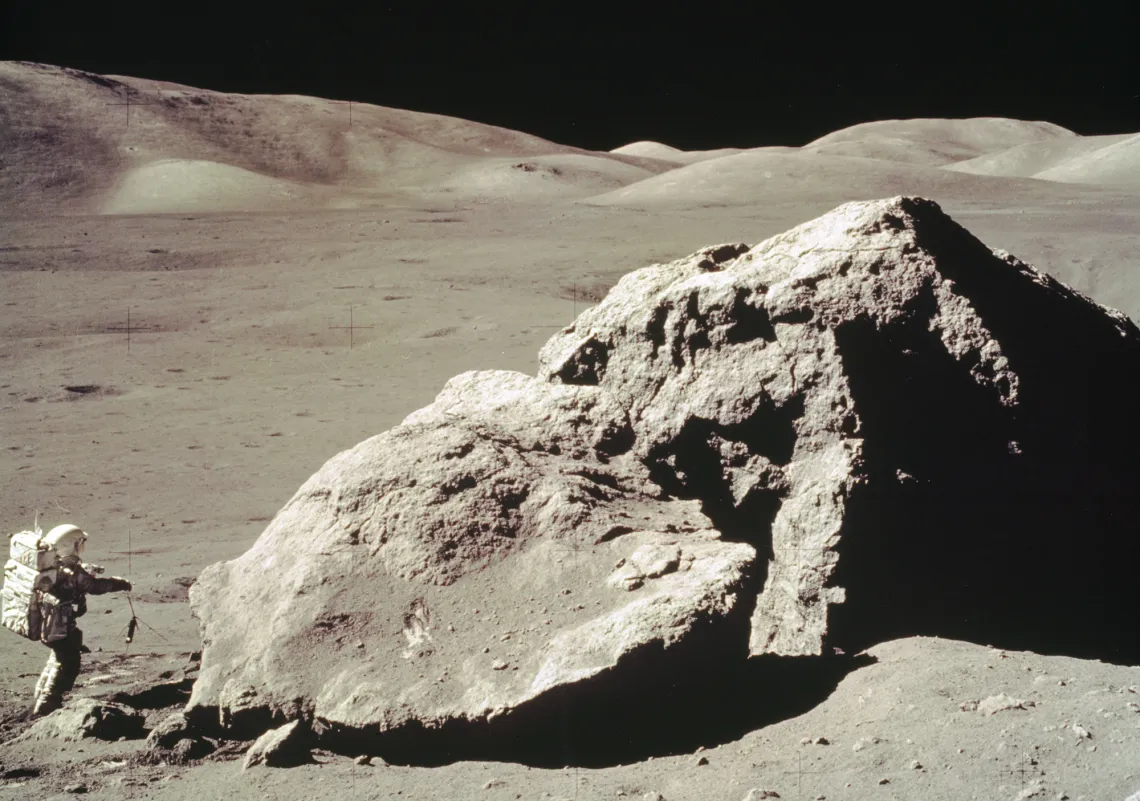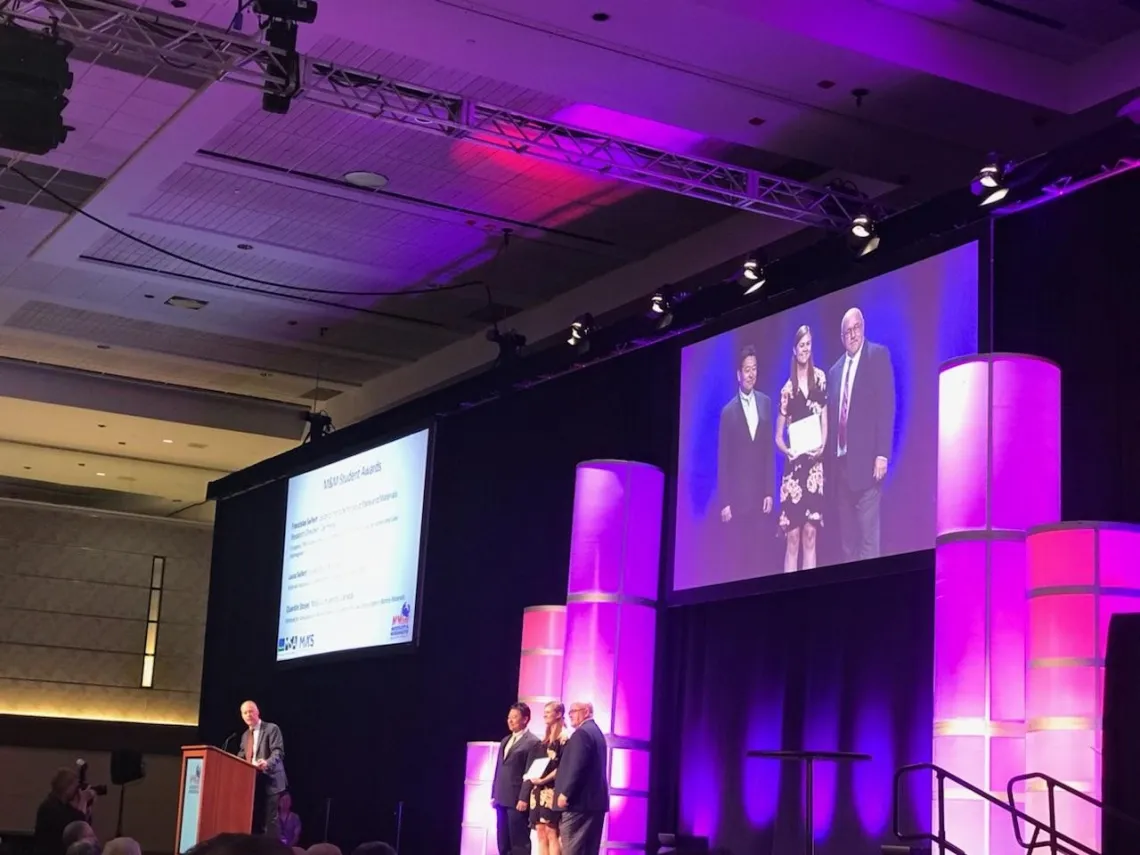
Apollo 17 astronaut Harrison “Jack” Schmitt stands next to a steep-walled crater named Shorty on Dec. 13, 1972. The UA's Jessica Barnes is among the scientists selected by NASA to be granted access to previously unopened samples, including some collected during NASA's last manned mission to the moon. (Photo: NASA)

Pierre Haenecour, the study's lead author, is pictured with one of the ultra-high-resolution electron microscopes used to obtain chemical and microstructural information about the stardust grain. (Photo: Maria Schuchardt/University of Arizona)

In this Apollo 17 onboard photo, scientist and astronaut Harrison H. Schmitt collects rock samples from a huge boulder near the Valley of Tourus-Littrow on the lunar surface. (Photo: NASA)

Laura Seifert Wins M&M Student Scholar Award

